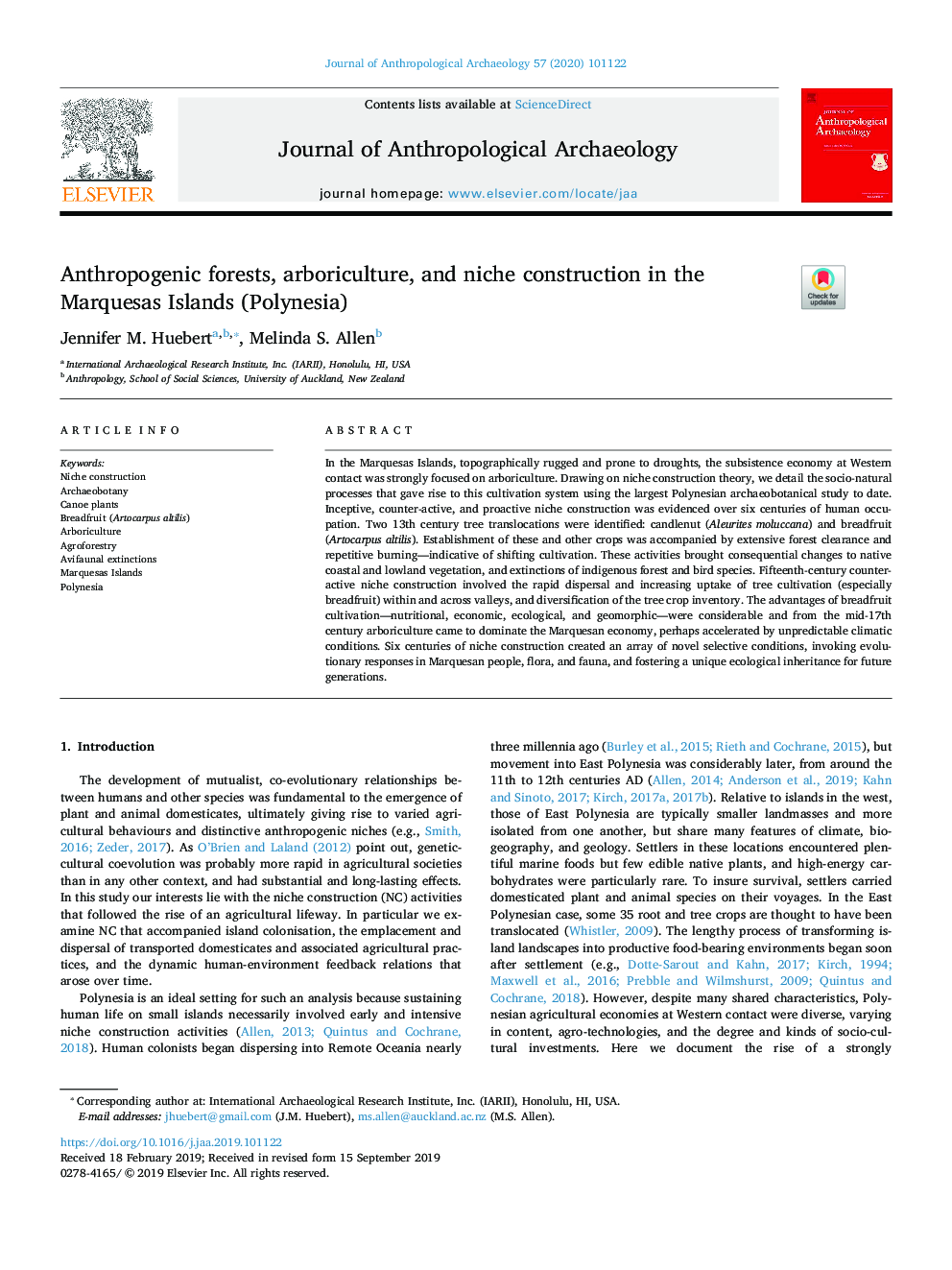| Article ID | Journal | Published Year | Pages | File Type |
|---|---|---|---|---|
| 13464686 | Journal of Anthropological Archaeology | 2020 | 17 Pages |
Abstract
In the Marquesas Islands, topographically rugged and prone to droughts, the subsistence economy at Western contact was strongly focused on arboriculture. Drawing on niche construction theory, we detail the socio-natural processes that gave rise to this cultivation system using the largest Polynesian archaeobotanical study to date. Inceptive, counter-active, and proactive niche construction was evidenced over six centuries of human occupation. Two 13th century tree translocations were identified: candlenut (Aleurites moluccana) and breadfruit (Artocarpus altilis). Establishment of these and other crops was accompanied by extensive forest clearance and repetitive burning-indicative of shifting cultivation. These activities brought consequential changes to native coastal and lowland vegetation, and extinctions of indigenous forest and bird species. Fifteenth-century counter-active niche construction involved the rapid dispersal and increasing uptake of tree cultivation (especially breadfruit) within and across valleys, and diversification of the tree crop inventory. The advantages of breadfruit cultivation-nutritional, economic, ecological, and geomorphic-were considerable and from the mid-17th century arboriculture came to dominate the Marquesan economy, perhaps accelerated by unpredictable climatic conditions. Six centuries of niche construction created an array of novel selective conditions, invoking evolutionary responses in Marquesan people, flora, and fauna, and fostering a unique ecological inheritance for future generations.
Related Topics
Social Sciences and Humanities
Arts and Humanities
History
Authors
Jennifer M. Huebert, Melinda S. Allen,
